Cribrarula cribraria (Linnaeus, 1758)
Sieve cowry, 15-35mm
Cribrarula cribraria
has a striking orange to bright red mantle that is just translucent enough to
permit the underlying spotted pattern of the shell to be seen. It is very closely
related to another Marshall Islands species called Cribrarula
gaspardi. Some authors consider C. gaspardi to be a variety
or subspecies of C. cribraria, but for the purposes of this web site,
we are considering them as two separate species, even though exactly where to
place some specimens is difficult to determine. Cribrarula cribraria
is typically larger, has a medium to dark brown dorsal coloration surrounding
large close-set white circular spots, and has a bright to dark red mantle. Cribrarula
gaspardi, on the other hand, is usually very small, has very pale orange
to orange brown dorsal color with white spots, and has an orange mantle. Whether
or not Cribrarula cribraria and C. gaspardi are indeed different
species, it is clear that they prefer different habitats. Cribrarula cribraria
prefers lagoon habitats ranging from the intertidal to shallow subtidal reefs,
where they live under rocks, often in the vicinity of their prey sponge, a red
encrusting species. Some typical Cribrarula cribraria are found on
lagoon shipwrecks as deep as about 35m, usually on or around red encrusting
sponges at night. Typical Cribrarula gaspardi are found nocturnally
on the seaward reef in surge channel and outer slope ledges and caves, as well
as on lagoon pinnacles and occasionally on shipwrecks. More information on this
species can be found on the Cribrarula gaspardi page. Like some of
the other red-mantled cowries, C. cribraria will often lose (autotomize)
the rear portion of its foot when disturbed. The various varieties of C.
cribraria are distributed across the Indo-Pacific with the exception of
the Hawaiian Islands and eastern Polynesia.
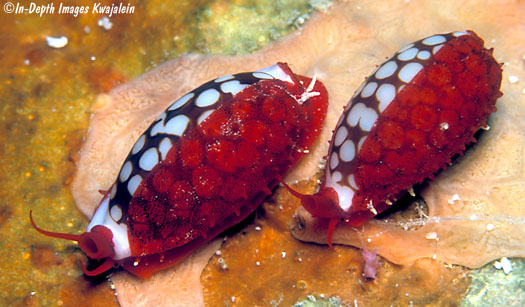
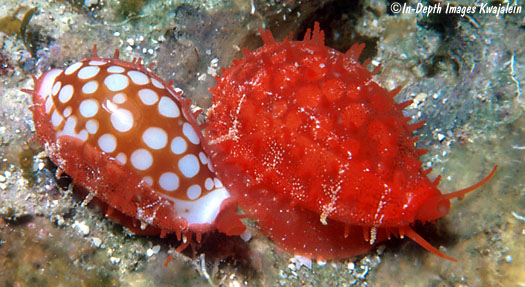
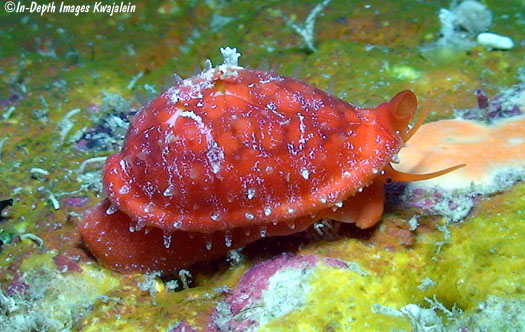
The mantle has a varying amount of dark pigment over the bright red.
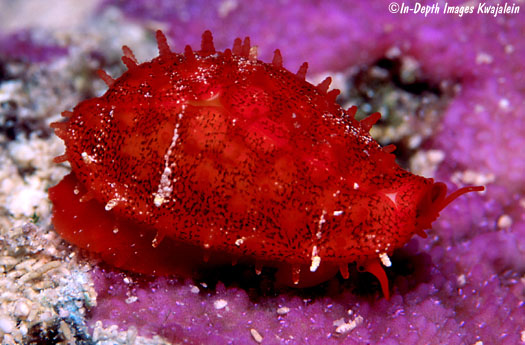
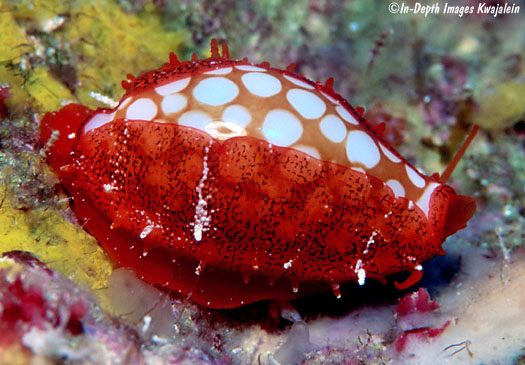
The next shot gives a good view
of the black eye at the base of one of the tentacles.
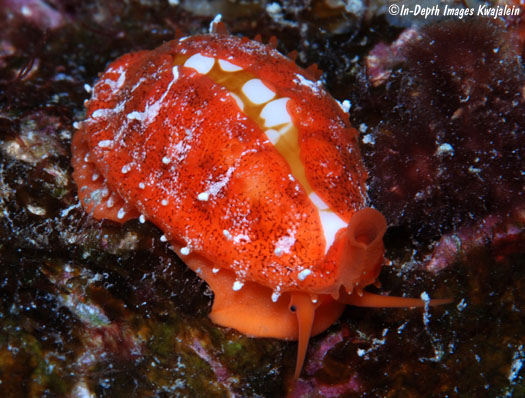
Speaking of eyes, the specimen
in the two photos below was photographed by Stan Jazwinski on the Prinz Eugen
shipwreck. This one has an extra eye at the base of the right tentacle. Hmm.
The Prinz Eugen was used in two nuclear tests at Bikini Atoll in 1946 before
being towed to Kwajalein, where it developed a leak and sank. I wonder...
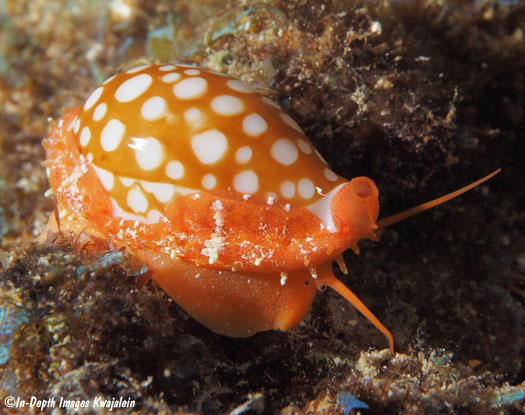
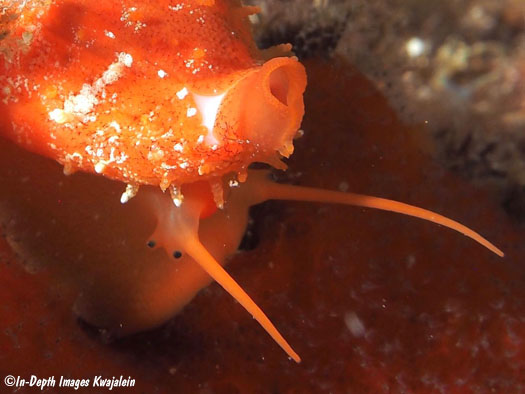
This individual was found eating
the red sponge it is on. You can clearly see the grazing marks to the left and
below the mantle-covered shell.
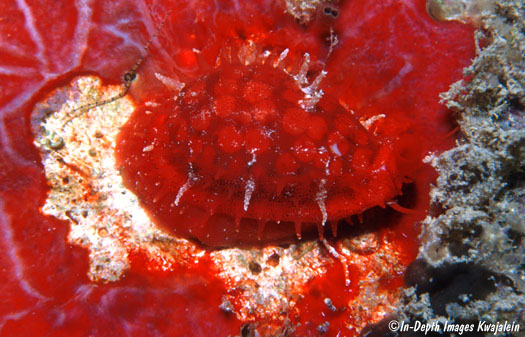 ]
]
The next two shots show juvenile specimens. The upper one has a nearly adult
shell morphology, but the brown dorsal color has not yet been deposited. It
apparently goes on late in the development of the shell. The lower mantle-covered
specimen is a thin bulla; the base of the shell has not yet folded over to form
the typical narrow cowry aperture.
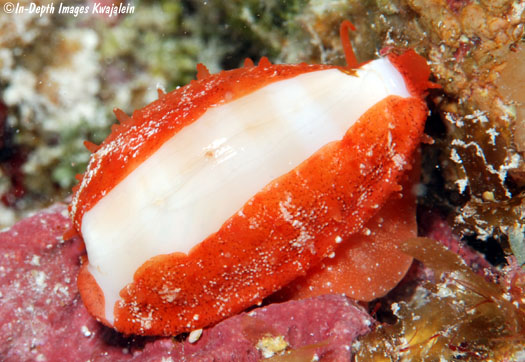
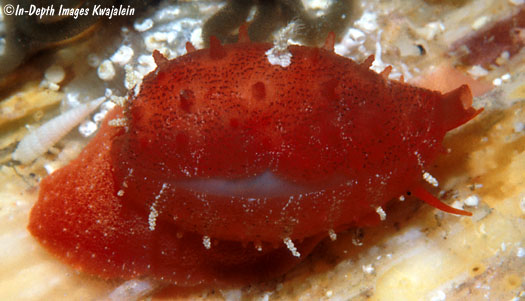
26.8mm, 26 April 1982
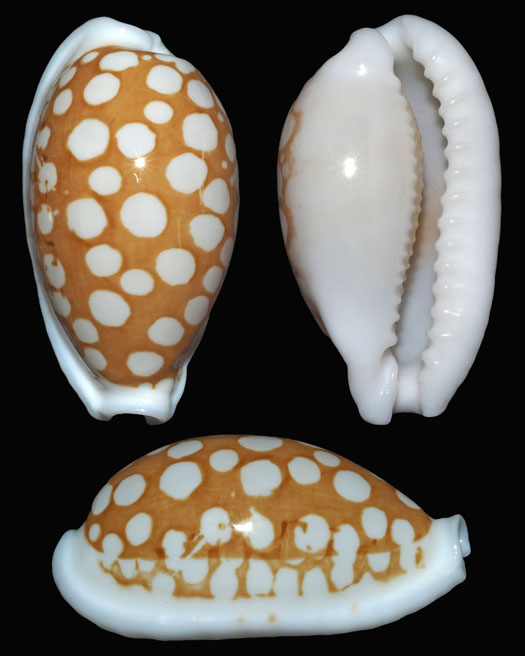
14.2mm, 5 March 2016
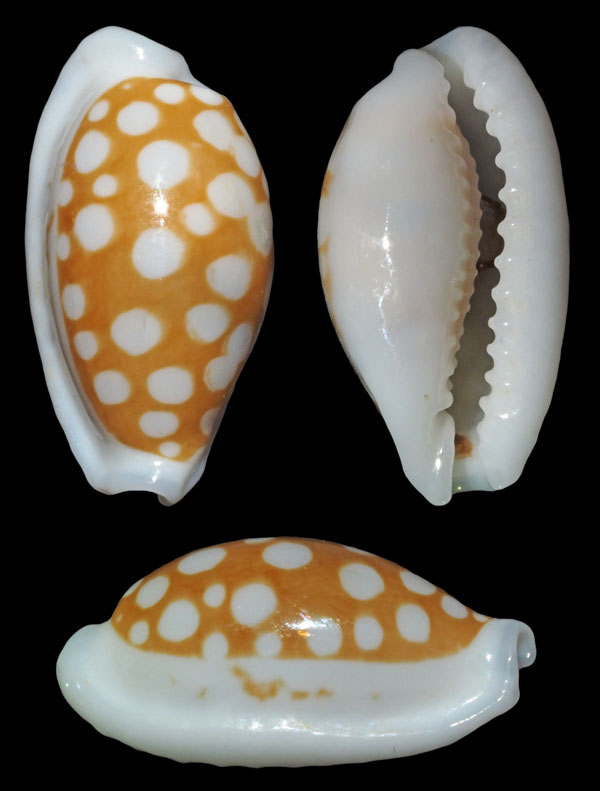
Created
1 April 2008
Updated 2 April 2024
Back to
cowries
Kwajalein Underwater Home









 ]
]


